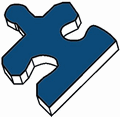Keynotes
The following keynote addresses will be given at IEEE CSMR-WCRE 2014.
-
Philippe Grosjean: Using biology and ecology as inspiration for software maintenance
-
Chanchal K. Roy, Minhaz F. Zibran and Rainer Koschke: The Vision of Software Clone Management: Past, Present and the Future
-
Jean-Luc Hainaut: Data Matters Most: But where has all the semantics gone?
-
Jens Knodel and Matthias Naab: Mitigating the Risk of Software Change in Advance. Retrospective on more than 50 Architecture Evaluations in Industry
Data Matters Most: But where has all the semantics gone?
Prof. Jean-Luc Hainaut has been named as the 22nd recipient of the international Stevens Award.
The presentation can be download here.
The award presentation will take place on Wednesday afternoon, 5 February 2014 as a keynote plenary session of theIEEE CSMR-WCRE 2014. Prof. Jean-Luc Hainaut is awarded for his fundamental contributions to both principles and practice in data modeling, database design, data reverse engineering, and data-focused systems evolution.
Biography Jean-Luc Hainaut

Dr. Hainaut is recognized for his fundamental contributions to both principles and practice in data modeling, database design, data reverse engineering, and data-focused systems evolution. Since the 1970s, Jean-Luc Hainaut's work at the Université Notre Dame de la Paix in Namur, Belgium, on the advancement and promotion of data technologies has been exceptional. The early introduction of binary semantic modeling and entity-relationship concepts, as well as multi-level model-driven database design methods, paved the way for many advances in systems development methods and tools. His application of transformation techniques in data-modeling and database reverse engineering approaches have enabled greater understanding of database structure and utilization in both scientific and business applications. Prof. Hainaut and his colleagues at Institut d'Informatique built, fostered, and nurtured a research environment at Namur that has a long and continuing reputation for deep contributions to theory, research, practice, and technical outreach in software and data engineering. This exemplifies the kind of quality achievement in advancing and applying software methods research that Wayne Stevens sought for the software industry.
Using biology and ecology as inspiration for software maintenance?
The presentation can be download here.
As a bioengineer and marine ecologist, I probably have a different view on software complexity and evolution than specialists in this field. The literature as well as discussion with colleagues suggests that there may well be 'hidden gems' in traditional ecology for software engineers. In this presentation, I will compare a couple of biological and software (mostly Open Source) ecosystems and suggest a few ideas that may be useful for software maintenance research.
Two key aspects appeared to me when I started to work on Open Source software ecosystems: (1) the difference in terminology in biology and software engineering, and (2) the much more collaborative trends in software ecosystems, compared to biological ecosystems.
The first aspect is mostly a technical issue that unfortunately creates a strong barrier between software engineers and biologists. So, it should be worth considering using the same or similar meaning for the same terms, like ecosystem, resource, consumer,... in both disciplines.
The second aspect is much more interesting. So, software ecosystems exhibit much more collaboration and much less competition than biological ecosystems? Since biologists consider competition as one of the major driving forces for biological evolution (recall Darwin and his natural selection mechanism through struggle for existence), it is very clear that the fundamental rules that drive both biological and software ecosystems are completely different.
So what? Is there still something to share between the two disciplines? For sure, a couple of concepts (mostly, simple emerging properties, e.g., the impact of biodiversity on resistance and resilience of an ecosystem, migration patterns, dependencies along the trophic chain,...) or tools (dendrograms, specialized multivariate analyses, biodiversity or interaction metrics,...) could be of inspiration to software engineers.
Yet, a much deeper consideration is whether the driving force of competition and selection of the fittest, which is so powerful for the evolution of biological ecosystems, could change somehow strategies for software design and evolution. I will discuss this question and propose a couple of ideas in this direction. They will, for sure, look strange in current views. For instance, why did a so badly designed language like R (Morandat et al 2012) become one of the most efficient tools for data analysis? Would a meta-software, able to translate one practical problem into different implementations and learn from their comparisons, change the design of software building blocks? Would the concept of phenotypes (same organism, understand software, but totally different appearance and properties depending on the environment) lead to computer tools that are better tailored for each user than the current ones?
Ultimately, all these ideas converge towards more freedom for self-organisation of software and software ecosystems than is currently the case. Are you, software engineers, ready to learn from living organisms and to loose a little bit of your orchestration power? Are you ready to become a little bit more observers and a little bit less architects? New and interesting emergent properties may well appear from that freedom you would accept to concede to your complex systems!
Biography Philippe Grosjean
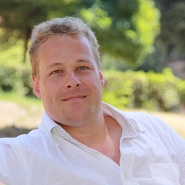
Career & education
- Professor at UMONS since 2008
- Associate professor at UMONS, 2004-2008
- Head of the laboratory of Numerical Ecology of Aquatic systems since 2004
- Scientist at CNRS, Marine Station of Villefranche-sur-mer, France, 2003
- Invited scientist at IFREMER Nantes, France, 2002
- Post-doc in biostatistic at the Marine Station of Villefranche-sur-mer, France, 2001
- PhD thesis, ULB, Brussels, Belgium in 2000 (Growth model of the reared sea urchin Paracentrotus lividus)
- Research assistant, ULB, Brussels, Belgium, 1991-2000
- Degree in Agricultural Engineer, specialty in Applied Zoology, 1986-1991
Currently ongoing research projects
ECOS (Ecological Studies of Open Source Software Ecosystems), ARC with Tom Mens.
COREAM (Coral Reef Ecology in Acidified Mesocosms), F.R.F.C. FNRS with ULB. Collaboration with IFREMER to automate phytoplankton classification using numerical image analysis and machine learning.
Patents co-author:
carbochemostat (WO2013010764) & zooscan (U.S. patent 20050123174).
Software development:
SciViews, ZooImage, PASTECS, maintainer of R Wiki (http://wiki.r-project.org) and translator of R in French. Languages: R & Javascript mainly.
Teaching:
Complete cursus in biostatistics (Ba2, Ba3, Ma1, Ma2 in biology), aquatic ecology, general oceanography, ecophysiology of marine organisms.
Five most significant publications:
- Grosjean, Ph. & K. Denis, 2013. Supervised classification of images, applied to plankton samples using R and zooimage. In: Zhao, Y. & Y. Cen (eds). Data Mining Applications with R. Elsevier (in press). 33pp (for the chapter).
- Faria, J.C., Ph. Grosjean, E.G. Jelihovschi & R. Pietrobon, 2010. Tinn-R Editor. Rmetrics eBook (https://www.rmetrics.org/ebooks-tinnr), 216pp.
- Kell, L.T., I. Mosqueira, Ph. Grosjean, J.-M. Fromentin, D. Garcia, R. Hillary, E. Jardim, S. Mardle, M. Pastoors, J.J. Poos, F. Scott & R. Scott, 2007. FLR: an open-source framework for the evaluation and development of management strategies. ICES J. Mar. Sci, 64:640-646.
- Grosjean, Ph., M. Picheral, C. Warembourg & G. Gorsky, 2004. Enumeration, measurement and identification of net zooplankton samples using the ZOOSCAN digital imaging system. ICES J. Mar. Sci., 61:518-525.
- Grosjean, Ph., Ch. Spirlet & M. Jangoux, 2003. A functional growth model with intraspecific competition applied to a sea urchin, Paracentrotus lividus. Can. J. Fish. Aquat. Sci., 60:237-246.
The Vision of Software Clone Management: Past, Present and the Future
Duplicated code or code clones are a kind of code smells that have both positive and negative impact on the development and maintenance of software systems. Software clone research in the past mostly focused on the detection and analysis of code clones, while the research in recent years indicates that clone management is taking the centre stage due to its pragmatic importance.
Over more than a decade of research on software clones, notably three surveys appeared in the literature, which cover the detection, analysis, and evolutionary characteristics of code clones. In this vision keynote talk we will present a comprehensive survey on the state of the art in clone management, with in-depth investigation of clone management activities such as tracing, refactoring and cost-benefit analysis beyond the detection and analysis. This is the first survey on clone management, where we point to the achievements so far, and reveal avenues for further research necessary towards an integrated clone management system. We will show that while clone detection seems to be a mature research area, there is much to do in managing clones.
Biography Chanchal Roy
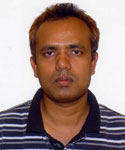
Chanchal Roy is an assistant professor of Software Engineering/Computer Science at the University of Saskatchewan, Canada. While he has been working on a broad range of topics in Computer Science, his chief research interest is Software Engineering. In particular, he is interested in software maintenance and evolution, including clone detection, analysis and management, reverse engineering, empirical software engineering, and mining software repositories.
He served or has been serving in the program committee of major software engineering conferences (e.g., ICSM, WCRE, MSR, ICPC and SCAM). He served as the Finance Chair for ICPCí11, Tool Co-chairs for ICSMí12 and WCREí12, Tool Chair for SCAMí12, Poster Co-chair for ICPCí12, Program Co-chair for IWSCí12, and Finance Chair for ICSMí13. He has been working as the General Chair for ICPCí14.
Biography Minhaz Zibran
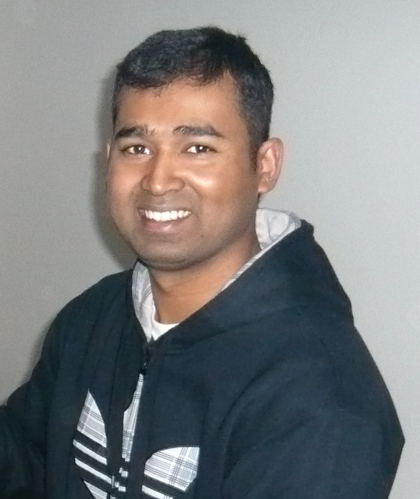
Minhaz Fahim Zibran is a PhD candidate at the Department of Computer Science, University of Saskatchewan, Canada. Minhaz joined the Software Research Lab of the university since September 2009. His research interests include various aspects of software engineering with particular focus on the detection, analysis, and management of code clones in evolving software systems.
Minhaz has co-authored scholarly articles published in ACM and IEEE sponsored international conferences and reputed journals. Throughout his career, Minhaz also earned both teaching and industry experience. He has been actively involved in organizing international conferences (e.g., ICPC'2011, SCAM'2012, ICPC'2012, WCRE'2012, ICSM'2013) in his area of research. His scholarly excellence enabled him earning many scholarships and awards including the postgraduate scholarship from the Natural Science and Engineering Research Council (NSERC) of Canada.
Biography Rayner Koschke
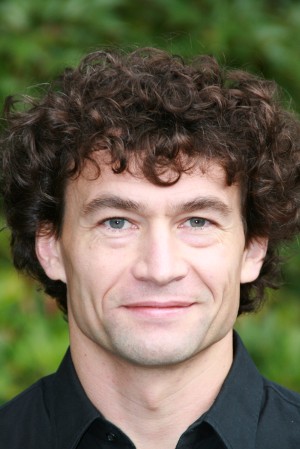
Rainer Koschke is a full professor for software engineering at the University of Bremen in Germany and is heading the software engineering group. His research interests are primarily in the fields of software engineering and program analyses. His current research includes architecture recovery, feature location, program analyses, clone detection, and reverse engineering. He is one of the founders of the Bauhaus research project (founded in 1997) and its spin-off Axivion GmbH (founded in 2006) to develop methods and tools to support software maintainers in their daily job through reconstructed architectural and source code views.
He is teaching reengineering and software engineering. He holdsa doctoral degree in computer science from the University of Stuttgart, Germany. He is the current Chair of the IEEE TCSE committee on reverse engineering and Steering Committee of WCRE.
Mitigating the Risk of Software Change in Advance.
Retrospective on more than 50 Architecture Evaluations in Industry
Architecture evaluation has become a mature instrument to make decisions about software systems, assess and mitigate risks, and to identify ways for improvement and migration of software systems. While scientific literature on approaches is available, publications on practical experiences are rather limited. In this paper, we share our experiences - after having performed more than 50 architecture evaluations for industrial customers in the last decade. We compiled facts and consolidate our findings about architecture evaluations in industry and especially highlight the role of reverse engineering in these projects. We share our lessons learned and provide data on common believes and provide examples for common misconceptions on the power of reverse engineering.
Architecture evaluation is both effective and efficient: effective as it is based on abstractions of the system under evaluation and efficient as it can always focus only on those facts that are relevant to answer the questions at hand. We conducted more than 50 architecture evaluations for industry customers at Fraunhofer IESE (an applied research institute for software engineering located in Kaiserslautern, Germany), where at least one of the authors has been directly or indirectly involved. These projects covered a large number of different types of systems, of industries involved, of evaluation questions asked, and of course a whole spectrum of different evaluation results. The contribution of this paper is to present our experiences together with context factors, empirical data, and lessons learned. On the one hand, we aim at encouraging practitioners to conduct architecture evaluations by showing their impact and lowering the hurdles to making first attempts on their own. On the other hand, we aim at giving researchers insight into industrial architecture evaluations, which can serve as a basis to guide research in this area.
Biography Jens Knodel and Matthias Naab
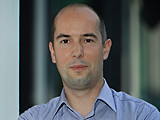
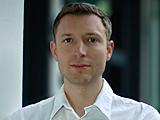
Dr. Jens Knodel and Dr. Matthias Naab are software architects. Their expertise is consolidated experiences and lessons learned from more than 50 projects with industry in domains like Embedded Systems, Information Systems, and Smart Ecosystems ñ lies in the definition, improvement, and assessment of software architectures.
Jens and Matthias are senior researchers at the Fraunhofer Institute for Experimental Software Engineering (IESE) in Kaiserslautern, Germany. They are responsible for project management, method development, and technology transfer in research and industry projects. They lead research activities in the area of software and systems architecture at IESE.
Besides, Jens Knodel, and Matthias Naab regularly coach practitioners on software architecture. In addition, they give tutorials at conferences and hold lectures at the Fraunhofer Academy and at the University of Kaiserslautern on the same topics. They are authors of more than 50 scientific, peer-reviewed publications in the areas of software architecture, maintenance, and evolution.
Jens Knodel has been serving regularly as a Program Committee member in international conferences in the areas of reengineering, software maintenance, and reverse engineering since 2006. He was the General Chair of the 13th European Conference on Software Maintenance and Reengineering (CSMR 2009). Jens Knodel graduated from the Technical University of Stuttgart, Germany, in 2002 with a graduate degree (German "Diplom") in Computer Science with a focus on Software Engineering. In 2010, he received his PhD from the University of Kaiserslautern, Germany. Jens Knodel is the lead architect and project manager of the award-winning tool SAVE (Software Architecture Visualization and Evaluation). Since 2011 he is head of the research area Smart Ecosystems at Fraunhofer IESE.
Matthias Naab graduated from the University of Kaiserslautern, Germany, in 2005 with a graduate degree (German "Diplom") in Computer Science; his diploma thesis was written in the context of the SAVE tool. Before joining IESE, he worked as a developer in the logistics domain. In 2012, Matthias Naab received his PhD from the University of Kaiserslautern, Germany; in his doctoral thesis, he investigated how to improve the flexibility of Information Systems by means of refined architecture methods. He is responsible for the area Information Systems Architectures at Fraunhofer IESE.
